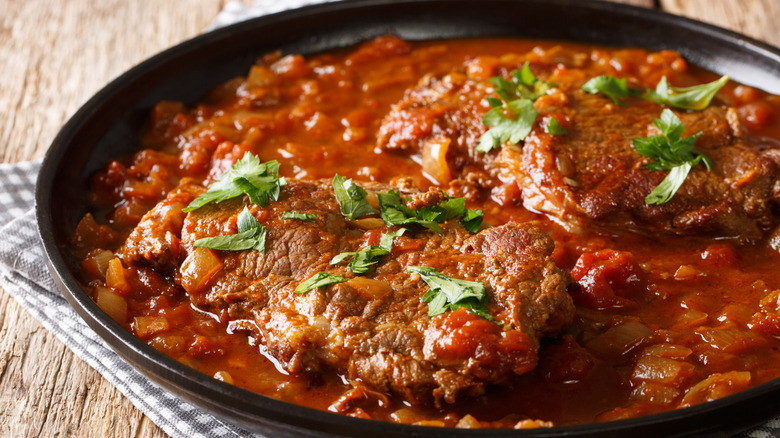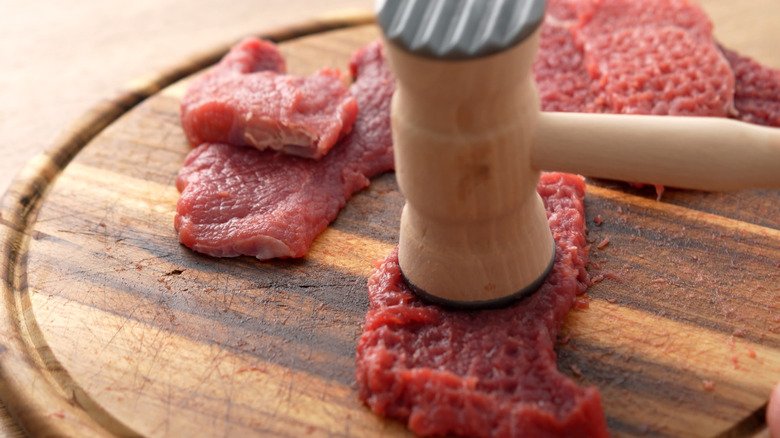What Cut Of Meat Is Used For Swiss Steak?
Swiss steak is a little bit of a mystery. There's an obvious, but incorrect, belief that it comes from Switzerland, where they're more about eating the most chocolate in the world. People mistake it for Salisbury steak, a seasoned meat patty with gravy that's completely unrelated. So what exactly is it? Swiss steak is beef that has been simmered in flavorful tomato sauce until it's super tender and delicious.
This wallet-friendly dish is made with steaks from less expensive cuts of beef, generally top, bottom, eye round, or chuck. The round cuts come from the back of the cow – the top from inside the rear legs, the bottom from the outside of the legs, and the eye from between the top and bottom rounds and the heel. Chuck is from the shoulder. These are more muscled parts of the animal because they help support its weight and are used whenever it moves around. That produces tougher meat that also has less of the marbled fat but creates a rich, beefy taste.
Because of this, the best preparations for round and chuck cuts are those that tenderize the meat and provide moisture and flavor, such as braising, marinating, stewing, and serving them with gravy, as with chicken fried steak — or made into Swiss steak. While it isn't one of the ways to cook the best cuts of steak, slowly cooking tougher cuts in the seasoned tomato softens them and creates a deliciously savory sauce.
Swissing the meat to make Swiss steak
Tenderizing begins even before the meat goes in the pan, which is where the "Swiss" part of the name comes in. Swissing is the process of breaking down the meat's tough muscle tissue by feeding it into a machine that cuts into its surface with blades mounted on rollers. The cube pattern that's formed on the beef gives it its other name, cube steak.
Some supermarkets, like Costco, sell prepared Swiss (or cube) steak meat — but this is one cut you should think twice about before buying. To be on the safer side, tenderize at home. Although there are manual machines that you crank, the cheaper options are easier. Just pound the steaks with the rough spiked side of a meat mallet, or use a hand tenderizer, a gadget that has a handle on top and blades sticking down. Put its base on the meat and push down repeatedly all around to make cut indentations with the blades.
Because the risk of bacteria spreading through the meat is greater with mechanically tenderized steak, you need to be sure you cook Swiss steak to a full 145 degrees Fahrenheit. This is not a case where you can treat yourself to a rare or even medium rare dinner — it needs to be fully cooked through to limit your chance of foodborne illness. And no, you can't pull it early and let carryover cooking take it from 140 to 145 — your steak has to hit the 145 mark before you remove it from the heat.


